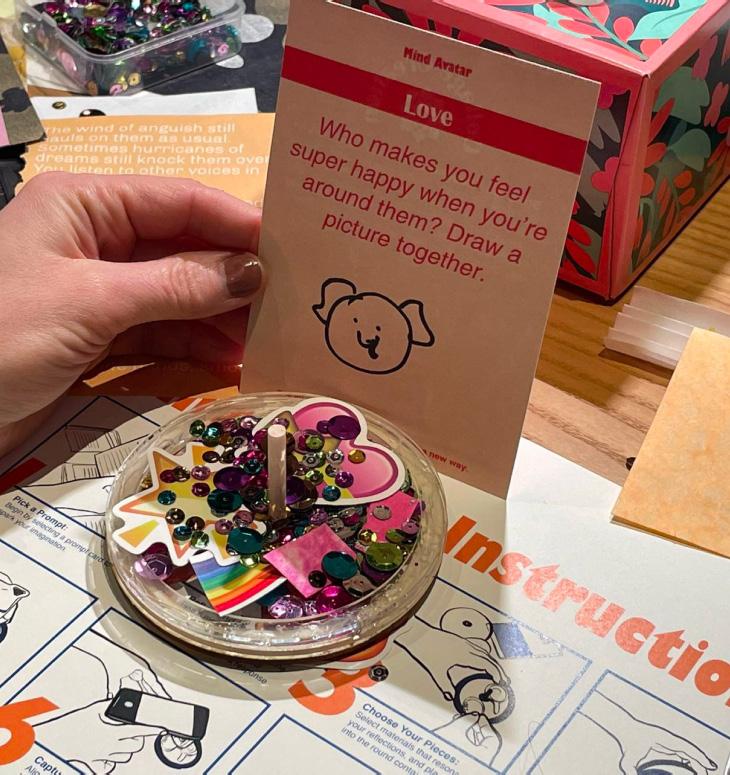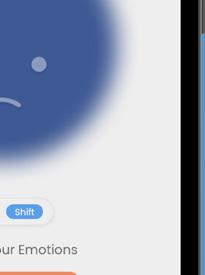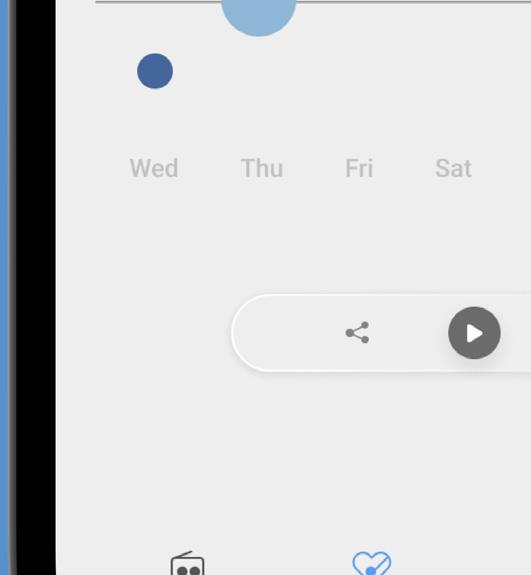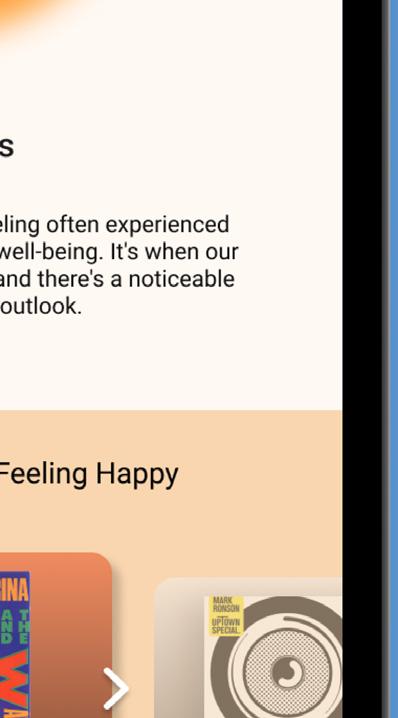The Me Within
Navigating Layers of Self
Wren Jiayuan WangThesis Design Journey
Introduction
Self Beyond the Physical Realm






I have always been passionate about video games, especially role-playing games where I step into the shoes of a character navigating through adventures in richly imagined worlds.





















One unique feature of role-playing games is exploring stories through decision-making.
For me, it often became blurred,
Whether it was me or my
character making the decision
As a player, I try to imagine
I am the character
It's me
But who controls the character
This blending of identities led me to a profound realization: I wasn't just playing a game; I was projecting myself into the virtual world.
This moment of introspection sparked my deeper curiosity about the concept of 'self' beyond the physical realm, leading to my thesis: 'The Me Within: Navigating Layers of Self. '
"Self"
Beyond the physical realm
Thesis Design Journey
Research
Identity & Mixed Reality

Identity
Quest: Pixels, Personas, and Play

Co-Creation Workshop
To explore different perceptions of identity, I launched a co-creation workshop titled Identity Quest: Pixels, Personas, and Play. The centerpiece of this workshop was an activity where participants created self avatars to visually represent their identities.






The results were enlightening. Each avatar not only closely resembled its creator in appearance but also included elements less visible to the outside world. These symbols represented personal fears, strengths and dreams—elements typically hidden from the public eye.








This duality highlights a complex interaction between the visible and hidden aspects of our identities, leading to the concept of the ‘inner’ and ‘outer’ self.
The outer self is what the world sees: our physical appearance, behaviors, and the social roles we play.
Conversely, our inner self is a private realm, encompassing our thoughts, memories, emotions, and values—elements that remain largely unseen but profoundly influence who we are.
Apperance Behaviors
Social Roles
Interactions
Outer Self
Thoughts
Memories
Emotions
Values
Inner Self
In physical reality, our outer self acts as the container for our inner self., providing a tangible form through which our internal experiences are expressed and perceived.
Pyshical World
However, we don’t just live in the physical world.
In today’s digital age, much of our interaction happens through screens and online platforms where the inner self often takes precedence.
The digital realm provides a unique space where our inner thoughts and emotions can be expressed more freely and creatively than ever before.
Therefore, my thesis explores:
the interplay between the real and the virtual,
the seen and the unseen, the outer and the inner aspects of our identities.
As we move forward, I will draw on insights from the literature I have studied and interviews I conducted with experts in technology, psychology, and sociology, as well as from diverse users.



















GlowTalk
Illuminate Your Thoughts Brighten Your Emotions
GlowTalk
Illuminate Your Thoughts Brighten Your Emotions
An interactive lamp that blends ambient lighting with AI-driven empathetic conversation, creating a nurturing space for self-discovery and comfort.






Carl Jung Psychiatrist and Psychoanalyst
"Your visions will become clear only when you can look into your own heart. Who looks outside, dreams; who looks inside, awakes."
The design was inspired by a profound insight from Carl Jung: “Your visions will become clear only when you can look into your own heart.” This emphasizes the critical importance of self-reflection.
However, self-reflection is often overlooked or avoided due to the emotional labor involved. My users have shared that while the night can be a time for unpacking the day’s events, the process can feel overwhelming and isolating. Many find traditional methods like journaling too taxing after a long day. Although some prefer to face these moments alone, the prospect of handling difficult emotions without support can also be daunting.
This leads to the need for a safer, more intuitive, and engaging environment for self-reflection.
I began ideating the concept by considering the objects we use every day, especially at night. I chose a bedside table lamp, as its light can create the desired atmosphere. Additionally, I thought about the interaction of chatting, which led to the creation of the chatting lamp concept.



Eventually, this process led to the development of GlowTalk.
It consists of three main components:
• The central round receiver for interaction
• A middle plate that houses the speaker and control elements




• An outer plate that functions as an ambient light source
Most importantly, it includes a built-in chat AI system to guide the conversation.






















• To use GlowTalk, simply lift the receiver to activate it.
• You’ll be greeted by Luna, your AI companion, who is designed to guide you through your self-reflection journey. Luna will prompt you to share your day, experiences, and feelings, creating a space where you can comfortably unpack your thoughts.
• The interaction takes place through the round receiver, which is intuitive to use and designed to make the process feel natural and engaging.


















• As you converse with Luna, the lighting changes to reflect the theme of your conversation and your mood, enhancing the atmosphere for comfort and reflection.
• The receiver also emits light, mimicking a responsive interaction, creating a dynamic and engaging experience.
• At the end of your session, Luna will summarize insights into your identity by linking your experiences and thoughts, offering a personalized and soothing reflection experience. This summary helps you gain a deeper understanding of yourself and supports your ongoing journey of self-discovery.
Mind Avatar
See All Different Parts of Yourself in a New Way
Mind Avatar
See All Different Parts of Yourself in a New Way
An experience design that use kaleidoscope and collage to enable users to explore and visualize their multifaceted identities.








Holly Fu Therapist
"One effective tool we use is visualization. It's quite powerful in therapy because it helps them connect more deeply with these experiences and understand
their own behaviors and motivations better."
My expert Holly Fu, a therapist, mentions that visualization is a powerful tool to help her client connect more deeply with themselves.
From that I delve into incorporating art therapy principles into visualization tools to enhance self-awareness and mental health.





The concept of a mirror often symbolizes self-reflection. However, when we consider the use of multiple mirrors, it adds a new dimension, symbolizing an evolving, changing self. This mul-





tiplicity can represent the different facets and stages of one’s identity, illustrating how we are continually growing and transforming. This idea forms the foundation of Mind Avatar.



Evolving from the concept of mirrors, I expanded the idea by creating kaleidoscopes. Using laser cutting techniques, I crafted intricate patterns and designs that reflect and refract light in



captivating ways. These kaleidoscopes symbolize the multifaceted and ever-changing nature of the self, with each turn and shift in perspective revealing new and unique patterns.




Additionally, I developed prompt cards to help users articulate their thoughts. Each card poses a unique question on the front.




While having space for collage on the back side.






















I chose four aspects of the inner self to focus on: aspiration, love, dream, and passion. Guiding users to delve into the fundamental areas of their lives.








Here’s how Mind Avatar works











Users start by selecting a prompt card and reflecting on the question posed on the front side. They can write or draw their thoughts and feelings directly on the card.





Next, users create a collage that represents their thoughts and feelings. Instead of making a traditional flat collage, they place their chosen images, colors, and symbols into a round container.



Using the kaleidoscope, they transform this static collage into a dynamic, ever-changing visual experience. As they look through the kaleidoscope and turn it, the contents of the round

container shift and change, creating intricate and constantly evolving patterns. This process symbolizes the fluid and multifaceted nature of self-reflection.



Finally, participants remove the items from the container and stick them to the back side of the prompt card. They take their collage home, not just as a piece of art, but as a meaningful memen-

to of their journey into self-discovery.





















Product Design
AuraWear
Listen, Feel, Transform: Shape Your Mood with Every Beat
AuraWear
Listen, Feel, Transform: Shape Your Mood with Every Beat
A smart wearable that syncs with your emotions, translating your inner feelings into visible signals and tunes.


























The design began with speculative thinking about the world in 2080, an era of mixed reality. In this future, advanced ocular implant technology is widely used, with Visionix Core leading the market. People use implanted lenses and the Nexus ring to manipulate reality by flipping the hourglass on the ring, seamlessly blending digital information with the physical world.
The Nexus Ring exemplifies the trend of wearable devices in a mixed reality world. This inspired the design hypothesis: “How might we use wearable devices to represent and manage oneself?” Given that the device is attached to the human body, integrating biometric sensors became a natural progression.
Emotional expression offers a window into an individual's personality and cultural background.
Russell, J. A. (1997). “How shall an emotion be called?” Psychological Review.
 Oliver Sacks Neurologist and Naturalist
Oliver Sacks Neurologist and Naturalist
But for many of my neurological patients, music is even more - it can provide access, even when no medication can, to movement, to speech, to life.
Drawing on the insights of psychologists like Russell, who view emotional expression as a gateway to understanding personality and cultural identity, and inspired by neurologist Oliver Sacks’ observations on music’s therapeutic effects on movement, speech, and life, I chose music as a medium to express and influence emotions. The goal was to not only represent our inner selves but also to wear this representation outwardly, integrating it into our daily interactions. Thus, AuraWear was conceived.








Starting with an inspiration board that captured diverse forms and shapes, I began refining AuraWear’s design through sketches and early prototypes. Using clay and ear models, I assessed form and fit to ensure both functionality and aesthetic appeal.



This iterative process involved extensive 3D printing to perfect the ergonomics and aesthetics of the device.









AuraWear takes the form of a musical note, symbolizing its core function.










Inside, it houses a heart rate variability sensor that gauges your emotional state and translates it into music using a bone conduction system. Also, it is an LED light that changes colors to indicate different moods.










EmoSense
Tune into your emotions
AuraWear offers two mood music channels: EmoSense and MoodShift. With EmoSense, you can listen to music that reflects your current mood;
MoodShift
Harmonize your emotions
While MoodShift provides music designed to alter your mood. This dual approach offers a personalized emotional experience.






Interaction Design
PulsePlay
Tune into Your Mood
PulsePlay
Tune into Your Mood
A music APP that transcends traditional listening by analyzing your emotions and music choices to craft personalized playlists and insightful metrics, revealing your unique MusicSelf.















































AuraWear






Biometric Data
Play the Music



PulsePlay
AuraWear collects biometric data to assess your emotional state, sending it to PulsePlay, which links your mood with musical preferences to refine a personalized algorithm. This evolving algorithm deepens its understanding of the relationship between your emotions and music, accurately recommending and playing mood-enhancing tracks through AuraWear.











Let’s talk about the interface, In PulsePlay, your current mood is displayed in real time. Choose whether you want music that reflects your mood or shifts it towards a desired state, and the app adjusts your playlists to fit.
Real Time Mood Detection
Recommendation Channels:
• EmoSense
• MoodShift







The ‘Mood Tune’ feature converts your daily emotional states into musical notes, crafting melodies that encapsulate your emotional patterns over weeks or longer periods.
Mood
Musical Notes
Mood Melody







Mood Selection
Playlist of The Mood
In the ‘Vibe List,’ select a mood to see playlists compiled from songs you’ve previously listened to that resonate with that particular emotion. Based on that, you can listen to your specific mood prefered music.
Bibliography
1. Foucault, Michel. Technologies of the Self: A Seminar with Michel Foucault. Edited by Luther H. Martin, Huck Gutman, and Patrick H. Hutton. Amherst: University of Massachusetts Press, 1988.
2. Erikson, Erik H. Identity: Youth and Crisis. New York: W.W. Norton & Company, 1968.
3. Cover, Rob. Digital Identities: Creating and Communicating the Online Self. San Diego: Academic Press, 2015.
4. Berreby, David. Us and Them: The Science of Identity. Chicago: University of Chicago Press, 2008.
5. Weinbaum, Stanley Grauman. Pygmalion’s Spectacles. Published posthumously.
6. Jung, Carl G. Man and His Symbols. New York: Dell Publishing, 1964.
7. Russell, James A. “How Shall an Emotion Be Called?” Psychological Review. 1997.
8. Sacks, Oliver. Musicophilia: Tales of Music and the Brain. New York: Knopf, 2007.
9. Blascovich, Jim. “Digital Freedom: Virtual Reality, Avatars, and Multiple Identities.” TEDxWinnipeg. Filmed Oct. 25, 2011. TED video, 18:05. https://www.youtube.com/watch?v=bgEA4iM8CHc
Let’s explore and embrace the depths of our identities, discovering the seen and the unseen within ourselves.
